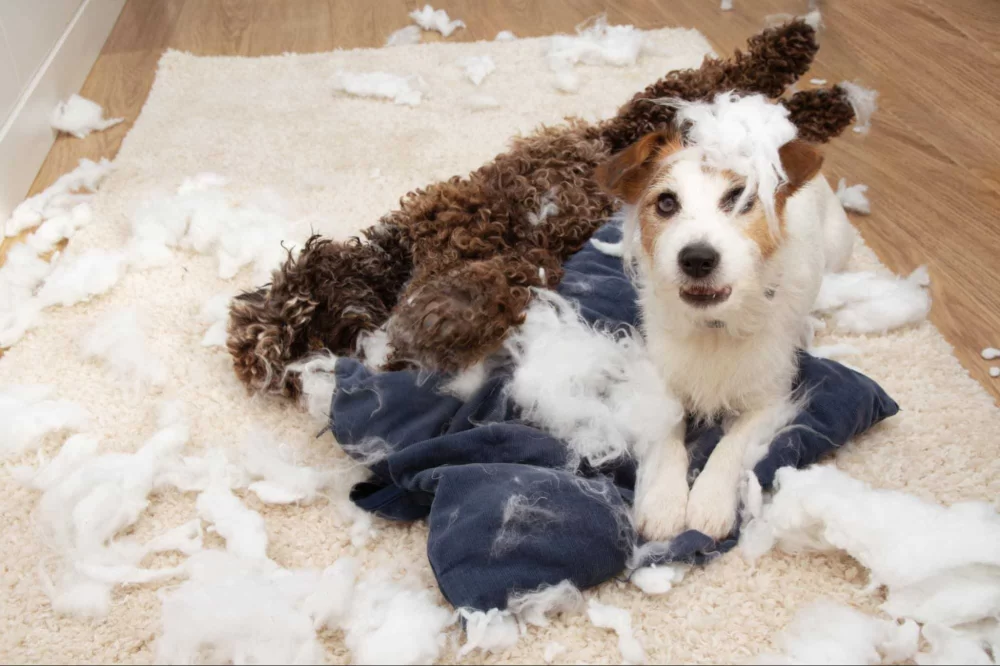Understanding Separation Anxiety in Dogs
Dealing with separation anxiety in dogs is one of the most challenging aspects of pet ownership. Having lived through this experience with my own dog, I can attest to how overwhelming it can be to watch your pet suffer when left alone. In this article, I'll share my journey and provide practical strategies that can help alleviate separation anxiety in dogs. Whether you're dealing with a newly adopted dog or trying to calm your long-time companion, the first step is understanding the root cause of their distress.
What Is Separation Anxiety in Dogs?
Separation anxiety in dogs occurs when a dog becomes distressed when separated from their owner or guardian. It can manifest in various ways, from excessive barking and whining to destructive behaviors like chewing or digging. In severe cases, dogs may even injure themselves trying to escape. It's a complex issue rooted in a dog's attachment to their human, often triggered by changes in routine, environment, or the sudden absence of a family member.
The Signs of Separation Anxiety
Recognizing the signs of separation anxiety in dogs is key to managing it effectively. Here are some common behaviors to look for:
- Vocalization: Excessive barking, howling, or whining when you leave the house.
- Destructive Behavior: Chewing furniture, scratching doors, or tearing up household items.
- Accidents Inside the Home: Dogs with separation anxiety often urinate or defecate inside, even if they are house-trained.
- Escaping: Some dogs may attempt to escape from the house, often injuring themselves in the process.
- Pacing and Restlessness: Dogs may exhibit compulsive behaviors like pacing or circling the room when left alone.
My Journey with a Dog Suffering from Separation Anxiety
When I first adopted my dog, Max, I had no idea what separation anxiety looked like. I thought it was just typical dog behavior when I saw him bark a little whenever I left. But soon, I realized his distress was much deeper than simple frustration. I would come home to find chewed-up shoes, scratched-up doors, and sometimes even his own mess on the floor. This wasn't just normal behavior—it was a cry for help.
At first, I felt helpless. I tried scolding him for the destruction, but that only seemed to make things worse. It was clear I needed to do more research and figure out how to manage his anxiety. That's when I learned about the importance of a gradual desensitization process. The key was to teach Max that being alone didn't have to be a traumatic experience. But before I dive into the solutions, let me share more about why this happens.
Why Do Dogs Get Separation Anxiety?
Dogs are pack animals by nature, meaning they form strong bonds with their human companions. Separation anxiety arises when a dog feels that bond is being threatened. Factors that contribute to this include:
- Changes in Environment: Moving to a new home, a new family member, or even a change in routine can trigger anxiety.
- Loss of a Family Member: The loss of a companion, whether human or animal, can cause distress.
- Lack of Socialization: Dogs who haven't been properly socialized may be more prone to anxiety when left alone.
- Past Trauma: Dogs that have experienced abuse or abandonment may be more likely to develop separation anxiety.
Effective Strategies for Managing Separation Anxiety in Dogs
Now that we've established what separation anxiety is and why it occurs, let's explore some effective strategies to help your dog cope. With patience, consistency, and the right approach, you can make a big difference in your dog's emotional well-being.
1. Gradual Desensitization
One of the most effective ways to help a dog with separation anxiety is through gradual desensitization. This method involves slowly getting your dog used to being alone. Start by leaving your dog alone for short periods and gradually increase the duration over time. This helps them learn that being alone is not something to fear. Keep the departures low-key to avoid triggering anxiety.
2. Create a Safe Space
Providing a designated "safe space" for your dog can also reduce anxiety. This could be a crate, a specific room, or a quiet corner where your dog can feel secure. Make this space cozy with familiar items like their bed, favorite toys, or an item of your clothing to provide comfort. The goal is to create a space where your dog can retreat when feeling overwhelmed.
3. Counter-Conditioning
Counter-conditioning involves changing your dog's emotional response to being left alone. For example, you can pair your departure with something positive, like a tasty treat or puzzle toy. This helps your dog associate being alone with positive experiences rather than fear and anxiety.
4. Provide Mental and Physical Stimulation
Ensuring your dog is mentally and physically stimulated during the day can help reduce anxiety. Long walks, interactive toys, and puzzle games can help burn off excess energy. A tired dog is generally less anxious and more relaxed when alone.
5. Consult with a Veterinarian
In some cases, separation anxiety may require medication or professional intervention. If your dog's anxiety is severe and not improving with behavioral strategies, consult with a veterinarian. They can provide guidance, recommend medications, or refer you to a professional dog trainer specializing in anxiety.
Overcoming the Struggles: My Success Story
It took time, but with consistent effort, I started to see improvements with Max. By gradually desensitizing him to being alone, creating a safe and cozy space, and incorporating positive reinforcement, he began to feel more secure. While it didn't happen overnight, his anxiety significantly decreased, and I could leave the house without worrying about his well-being.
If you're dealing with a dog suffering from separation anxiety, know that you're not alone. With patience and the right approach, you can help your dog feel more comfortable and secure. And remember, every dog is different—what works for one may not work for another. It's all about finding the strategies that best suit your dog's unique needs.
Conclusion
Separation anxiety is a serious issue that many dog owners face, but it's also something that can be managed. By recognizing the signs, understanding the causes, and employing effective strategies, you can help your dog cope with their anxiety. It takes time, consistency, and compassion, but in the end, the bond you share with your dog will only grow stronger.












